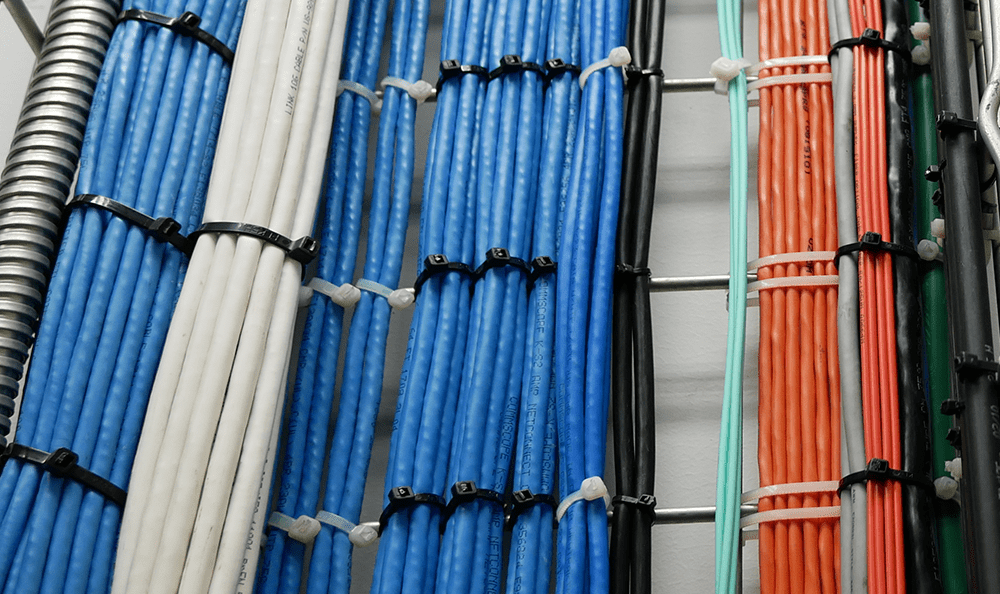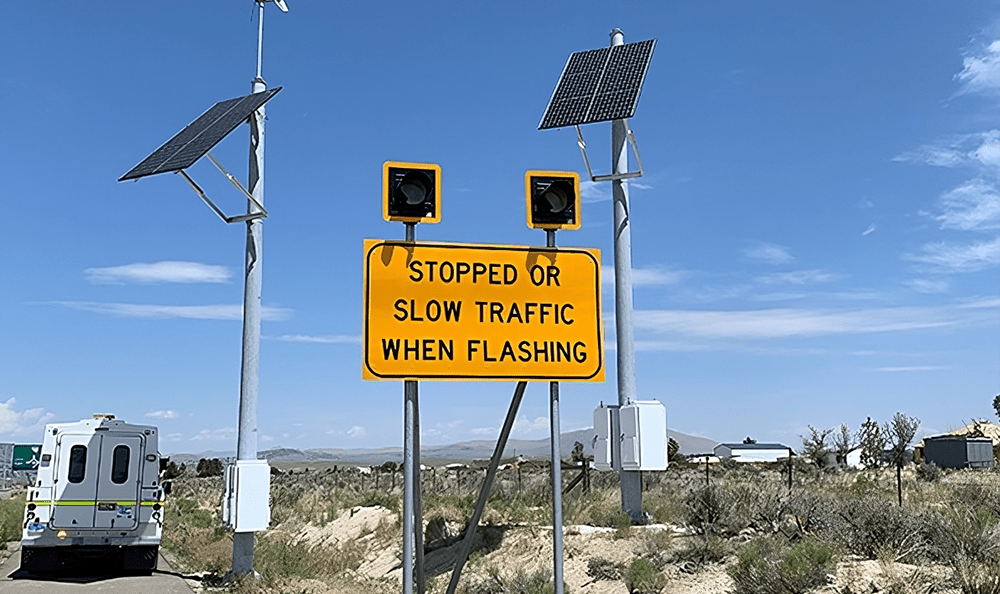If you opened the control box from your latest project, would you find an explosion of disorganized cables, neatly routed and color-coded components, or something in between? We’re not out to shame anyone for their method of organization, but good cable management provides real benefits beyond being aesthetically pleasing—like enabling easier scaling and weeding out problematic components when troubleshooting.
Here are best practices for a successful cable management application, plus three reasons it pays to keep things tidy. Thinking more outside the box? Here are tips for an outdoor application. Read the Outdoor Article.
Tools + Tips for Cable Management
Consider the following supplies and guidelines to make setting up and organizing your control box a breeze.
Supplies for Cable Management
- Cable ties for securing cables together.
- Note that some organizations prohibit the use of zip ties; cloth ties are recommended in this instance.
- Cable trays or conduits for protecting and organizing cables, dependent on the size and requirements of your control box.
- A label maker for clearly labeling each cable, making it easy to identify its purpose.
- DIN rail mounts, if your devices support the standardized mounting system.
- Velcro straps to bundle modular devices and their associated cables.
- Cable clips or adhesive mounts to secure loose cable ends within a control box.
- Wire loom or braided sleeving for additional protection and organization—especially in applications with movement or potential abrasion.
- Cable grommets for routing cables through openings in the control box to provide additional protection and a cleaner appearance.
Tips for Cable Managing a Control Box
Plan and design: Before you start, plan the layout of your cables. Consider the optimal path for each cable to minimize interference, increase flexibility, and ensure easy access for maintenance. When designing a control box that’s intended to be replicated for multiple sites, contact our sales engineers to make the most of every build.
Give it a name: Label each cable with its function or destination. This makes it easier to identify and troubleshoot issues, especially in complex control boxes with numerous cables.
Loop it: Secure groups of cables together using cable ties or Velcro straps. This helps prevent tangling and makes it easier to trace individual cables when needed.
Utilize cable trays or conduits: Employ cable trays or conduits to protect cables from physical damage and to keep them organized. This is especially important in industrial environments where cables may be exposed to harsh conditions. While more common in outdoor applications, you may be working with a smaller control box that lacks raceways or room for much cable management. In that case, focus on labeling and keeping cables separated, as in the below tip.
Separate power and data cables: Keep power cables separate from data cables to minimize electromagnetic interference. As a best practice, designate one side of the control box for power cable entrance and the other side of entry only for data communication cables. Keep them as separate as possible within the box.
Or combine power and data: The devices in your control box may be PoE-enabled. Power Over Ethernet, or PoE, allows power and data to be transmitted over a single ethernet cable. Read up on PoE.
Standardize the mounting: If applicable, use DIN rail mounting for your devices. This provides a standardized and organized way to mount control equipment in the control box.
Keep scalability and modularity in mind: For modular devices like the ControlByWeb X-410™ or X-600M™, use velcro cable ties to bundle together the device and its associated cables. This keeps everything neat and allows for easier removal and replacement of devices.
Secure loose ends: Use cable clips or adhesive mounts to secure loose cable ends inside the control box. This prevents cables from moving around and helps maintain a clean and organized appearance.
The Importance of Indoor Cable Management
- Space Optimization and Aesthetics
Indoor industrial spaces often don’t have much space for cable routing. Efficient cable management may make the difference in fitting every necessary component while maintaining a clean, organized environment. The X-410, with its compact design and DIN rail mounting, is tailor-made for these applications. It allows for a discreet and space-efficient installation. - Temperature and Environmental Control
Similar to outdoor applications, Indoor environments can present their own set of environmental challenges, from extreme temperature conditions to high humidity. Properly implemented cable trays and conduits can help safeguard your setup from these stressors. Devices like our web-enabled relays further reduce the need for physical access to the application site. - Enhanced Security Measures
Even with safeguards like access restriction and cameras in place, securing a control box should be a consideration in an industrial setting. Proper cable management reduces the risk of unauthorized tampering. ControlByWeb remote I/O controllers add an extra layer of security by allowing administrators to monitor and manage devices without compromising physical security measures.
Simplify Cable Management with ControlByWeb
ControlByWeb devices bring automation and control closer to the destination through integration into Ethernet infrastructure by reducing the amount of cabling needed. They can be a great asset in renovation where pulling new cables is cost-prohibitive.
X‐410™ ‐ Compact and Versatile
The compact form factor and standardized mounting options of the X‐410 make it ideal for cable management. Whether installed in control cabinets or confined spaces, the X-410 facilitates efficient cable routing without compromising functionality.
X‐600M™ ‐ Modular I/O Expansion
The modular design of the X‐600M enhances the scalability of indoor IIoT installations. Its expandable I/O points consolidate multiple connections into a single module, simplifying cable management in confined spaces. The device ensures that indoor installations remain flexible and adaptable to evolving connectivity needs.
Show Off Your Setup
Do you have an impressive example of clean cable management? Snap a pic and send our sales team an email for a chance to be highlighted in a future post. Bonus points if a ControlByWeb device is part of the setup.
The ControlByWeb Difference
Done correctly, cable management can directly impact operational efficiency—and it will save you or other operators untold headaches down the road when it comes time for repair or an upgrade. For help with your industrial application, get in touch with our team or schedule a 15-minute demo to get a feel for our devices.




